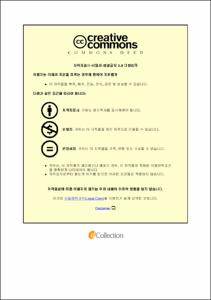사용후핵연료 저장조 수동형 냉각시스템의 환형 이중관 히트파이프의 열적 성능
- Alternative Title
- Thermal Performance of Loop-type Concentric Annular Heat Pipe for Passive Cooling System of Spent Fuel Pool
- Abstract
- The spent nuclear fuels are still highly radioactive and continues to generate significant heat for decades. Hence, every nuclear plant has a spent fuel pool(SFP) to store spent nuclear fuels. The spent nuclear fuels are submerged in the water of SFP, and the water is continuously circulated to draw heat away from the spent fuels and keep them at a safe temperature. Since the Fukushima accident, safety issues about spent fuel pools have been raised. Because current cooling systems of SFP are vulnerable to an accident such as a malfunction or blackout, lots of attempts to develop passive cooling systems of SFP have been made.
A heat pipe is an efficient heat transfer device which can transfer heat at a low temperature difference through phase change of the working fluid. Due to this feature, heat pipes can be used effectively to develop a new passive cooling system of SFP. Therefore, there have been lots of studies that have tried to apply heat pipes to the passive cooling system of SFP. However, theses researches have studied about wickless heat pipes which is called thermosyphon and, there is no research about an annular heat pipe. An annular heat pipe is similar to the conventional heat pipe except that the cross section of pipe is annular instead of circular. Its surface for heat transfer can be increased significantly without increasing the outer diameter of pipe. Hence, applying annular heat pipe to the SFP passive cooling system is more efficient.
Therefore, this paper designs a loop-type concentric annular heat pipe for the passive cooling system of SFP by referring preceding research, and set reduction model of SFP to research thermal performance of heat pipe with charging ratios, air velocities, water temperatures, and clearance. The results were summarized as follow:
1. The optimal charging ratio is charging ratio when the evaporator section which is submerged in hot water can be packed with the liquefied working fluid during operating of heat pipe.
2. Heat transfer rate of heat pipe increases, as water temperature increases.
3. As the air velocity at condenser section is increases, both the heat transfer rate of heat pipe and the heat transfer coefficient of air are much larger than those for the natural convection. This result indicates that this cooling system with other power such as fan can be worked more effectively at the normal operation state.
4. As clearance is decrease, heat transfer coefficient increase.
5. Empirical correlation to predict how heat transfer coefficient increase compared with thermosyphon which has identical external diameter was obtained
- Issued Date
- 2017
- Awarded Date
- 2017. 2
- Type
- Dissertation
- Keyword
- 사용후핵연료 저장조 수동형 냉각 이중관 히트파이프
- Publisher
- 부경대학교 대학원
- Affiliation
- 부경대학교 대학원
- Department
- 대학원 냉동공조공학과
- Advisor
- 김종수
- Table Of Contents
- 제 1 장 서론 1
1.1 연구 배경 및 목적 1
1.2 사용후핵연료 저장조(SFP) 3
1.2.1 사용후핵연료 3
1.2.2 사용후핵연료 임시 및 중간 저장 6
1.2.3 사용후핵연료 저장조(SFP) 8
1.3 이중관 히트파이프 10
1.3.1 히트파이프 10
1.3.2 환형 이중관 히트파이프 11
1.4 선행연구 13
제 2 장 실험장치 및 방법 15
2.1 사용후핵연료 저장조의 수동형 냉각시스템 15
2.2 실험 장치 17
2.2.1 수조(Pool) 17
2.2.2 이중관 히트파이프 19
2.2.3 응축부 열교환기 21
2.3 실험 방법 24
2.3.1 열전달률(Heat transfer rate) 24
2.3.2 충전율(Charging ratio) 26
2.3.3 수조 물의 온도 변화 29
2.3.3 응축부 열교환기 강제대류 29
제 3 장 실험결과 및 고찰 31
3.1 열전달률 실험값 비교 31
3.2 작동유체 충전율(Charging ratio)의 영향 34
3.3 수조 물 온도의 영향 44
3.4 응축부 열교환기 측 풍속의 영향 48
3.5 환형 공간 간극(Clearance)의 영향 53
3.6 사용후핵연료 저장조의 환형 이중관 히트파이프 66
제 4 장 결론 68
참고문헌 70
- Degree
- Master
- Files in This Item:
-
-
Download
 사용후핵연료 저장조 수동형 냉각시스템의 환형 이중관 히트파이프의 열적 성능.pdf
기타 데이터 / 5.29 MB / Adobe PDF
사용후핵연료 저장조 수동형 냉각시스템의 환형 이중관 히트파이프의 열적 성능.pdf
기타 데이터 / 5.29 MB / Adobe PDF
-
Items in Repository are protected by copyright, with all rights reserved, unless otherwise indicated.